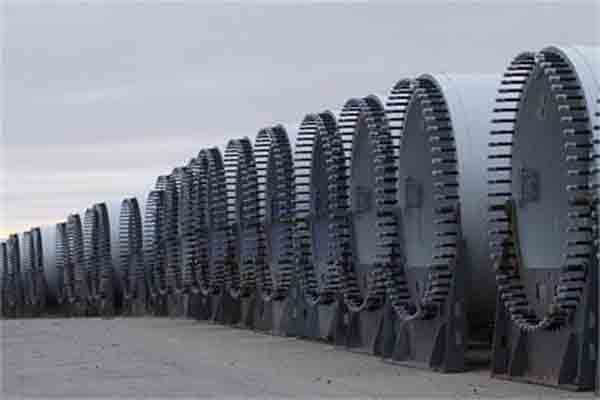
These wind turbines are replacing one-third of fossil fuels on the Galapagos Islands without harming a single endangered bird.

Wind turbines are used to convert kinetic energy from the wind into mechanical power and are a viable alternative to using fossil fuels, which are extremely harmful to the environment.
The Galapagos Islands, the symbol of evolution and change as a method of survival, recently installed and began using three huge wind turbines on one of their islands. Since they were erected, the island has cut down its use of diesel fuel by one-third.
Additionally, long-term monitoring has shown that the huge turbines have not injured or killed a single critically-endangered bird in their time of service.
This last fact is quite important for the health of the islands because they are home to some of the most unique animals in the world. The islands’ isolation and climate has forced their residents to adapt over millions of years to better survive in their surroundings.
Climate change and other environmental and human-related factors, such as a 150,000 gallon oil spill off the coast of San Cristóbal in 2001, have contributed to an increase in the endangerment of many animals on the island, meaning that measures to prevent their extinction are of the utmost importance.
When the turbines were erected, some feared that they would interfere with the endangered birds by resulting in injuries or death, causing their numbers to dwindle further. Monitoring has shown that this is not the case and suggested that continuous use of the wind turbines would be safe.
The adoption of the turbines as an alternative means of generating energy proves that humans on the island are capable of evolving and making adaptive changes as well. A growth in population and tourist visitors has caused the demand for energy to rise and forced residents to reevaluate their source of energy.
After the oil spill in 2001, Ecuador appealed to the United Nations to develop ways to prevent a spill from happening again. Between 2007 and 2015, 157 wind turbines were supplied to the nations affected by the spill. San Cristóbal has now reduced their use of diesel fuel by 2.3 million gallons per year and avoided 21,000 tons of carbon dioxide emissions.
San Cristóbal’s local utility office has goals to convert the Galapagos into a zero-fossil-fuel territory. Some challenges that the island has faced are that the blades of the turbines need to be cleaned regularly and few locals are willing or able to do the job. Mountain climbers were hired to scale the turbines and clean the blades.
Since the issue of the danger to the birds has been addressed and essentially expelled, this energy alternative is proving to be beneficial to the island and an example of how turbines can work for other nations.
Do you believe that wind turbines should be used in more areas? Please comment on, like, and share this article!
This article (Wind Turbines On Galapagos Islands Are Cutting Down On Diesel Fuel Without Harming Endangered Birds) is free and open source. You have permission to republish this article under a Creative Commons license with attribution to the author and TrueActivist.com




